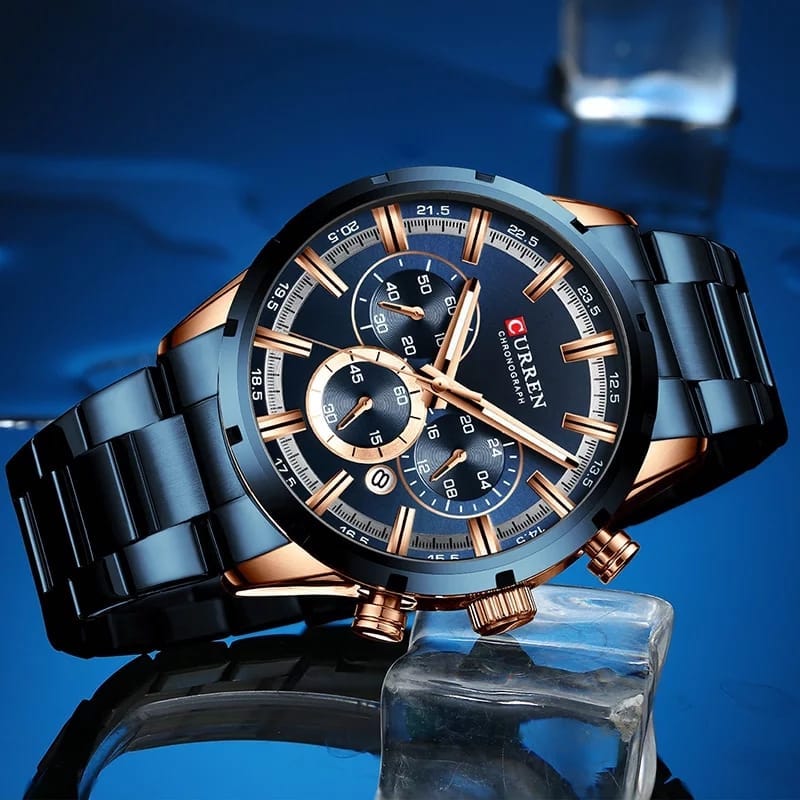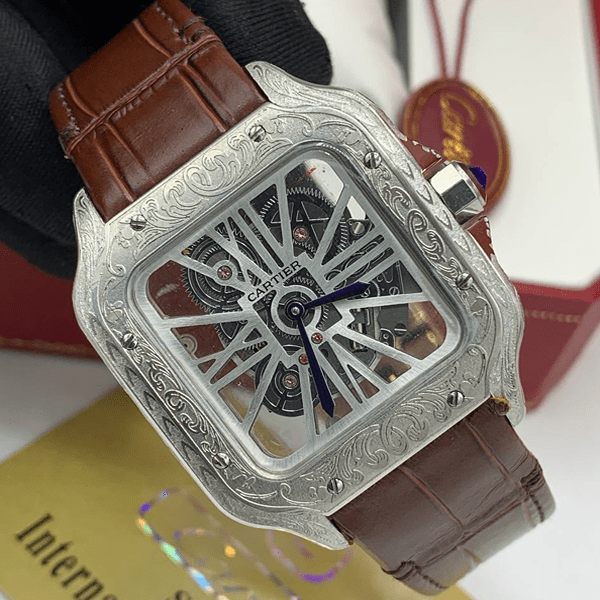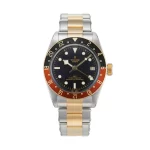Introduction
Wristwatch has been a staple accessory for centuries, serving as both a functional timekeeping device and a fashion statement. Despite the rise of digital technology and smartwatches, wristwatches continue to hold a special place in the hearts of many. In this comprehensive guide, we will delve into the history, functions, types, maintenance, and future of wristwatches.
Part 1: History of Wristwatches
Level 1: Early Origins of Wristwatches
Wristwatches have a rich history that dates back to the 16th century when they were initially worn by women as decorative accessories. However, it was during the late 19th and early 20th centuries that wristwatches gained popularity among men, particularly during World War I when soldiers found them more practical than pocket watches.
Level 2: Evolution of Wristwatch Designs
Over the years, wristwatch designs have evolved significantly, from classic mechanical movements to the introduction of quartz technology and, more recently, smartwatches. Each era has left its mark on the design and functionality of wristwatches, reflecting the cultural and technological advancements of the time.
Part 2: Functions of Wristwatches
Level 1: Timekeeping
The primary function of a wristwatch is to keep track of time. Whether it’s for practical purposes or as a fashion accessory, a wristwatch serves as a convenient and efficient way to stay punctual throughout the day.
Level 2: Additional Features
Modern wristwatches often include additional features such as chronographs, moon phase displays, and water resistance. These functions cater to specific needs and preferences, adding value and versatility to the timepiece.
Part 3: Types of Wristwatches
Level 1: Mechanical Watches
Mechanical watches are powered by a complex system of gears and springs, requiring regular winding to keep accurate time. They appeal to enthusiasts who appreciate the craftsmanship and tradition of watchmaking.
Level 2: Quartz Watches
Quartz watches, on the other hand, are powered by a battery and utilize a quartz crystal to regulate the timekeeping. They are known for their accuracy and low maintenance, making them a popular choice for everyday wear.
Part 4: Maintenance of Wristwatches
Level 1: Regular Cleaning and Care
Proper maintenance is essential to preserve the functionality and aesthetics of a wristwatch. Regular cleaning, polishing, and servicing by a professional watchmaker can extend the lifespan of the timepiece.
Level 2: Storage and Handling
When not in use, it’s important to store wristwatches properly to protect them from dust, moisture, and impact. Additionally, handling the watch with care and avoiding exposure to extreme conditions can prevent unnecessary wear and tear.
Part 5: The Future of Wristwatches
Level 1: Integration of Technology
With the rapid advancement of technology, the future of wristwatches is likely to incorporate more innovative features, such as fitness tracking, smart notifications, and contactless payments. This fusion of traditional watchmaking and modern technology aims to cater to the changing lifestyle needs of consumers.
Level 2: Sustainability and Ethical Practices
As the demand for sustainable and ethically produced goods grows, the watch industry is also embracing eco-friendly materials and responsible manufacturing practices. This shift towards sustainability reflects a commitment to ethical sourcing and environmental conservation.
Part 6: Innovative Features of a Modern Wristwatch
In today’s market, wristwatches come with a wide range of innovative features that make them not only attractive but also practical and functional. One of the most common features is water resistance, which allows the wearer to use their watch in various settings, including while swimming or showering. Another popular feature is a built-in GPS system, which allows the wearer to track their location and distance traveled during workouts or outdoor activities.
Furthermore, many modern wristwatches come equipped with fitness tracking features, such as heart rate monitors, step counters, and calorie trackers. These features are incredibly useful for individuals who are focused on maintaining an active and healthy lifestyle. Some watches also incorporate mobile payment capabilities, allowing users to make purchases using their watch and a linked payment method.
Additionally, many wristwatches now come with customizable watch faces and straps, allowing the wearer to change the look of their watch to suit their style and preference. Some high-end models even offer interchangeable complications, such as additional dials and displays, to enhance the functionality and aesthetics of the watch.
Overall, the innovative features of modern wristwatches have greatly enhanced their appeal and utility, making them much more than just a timekeeping device.

Part 7: The History and Evolution of Wristwatches
The history of wristwatches dates back to the late 19th century when they were primarily worn by women as decorative jewelry pieces. However, it wasn’t until the early 20th century that wristwatches gained popularity among men, particularly during World War I when soldiers found them to be more practical and convenient than pocket watches.
Over the years, wristwatches have evolved from simple timekeeping devices to sophisticated pieces of technology with a wide range of features and capabilities. They have become symbols of status, style, and functionality, with various designs and styles catering to different preferences and needs.
Part 8: How to Care for Your Wristwatch
Caring for your wristwatch is essential to ensure its longevity and maintain its functionality and appearance. Here are some tips for proper wristwatch care:
- Keep it clean: Regularly wipe down your wristwatch with a soft, lint-free cloth to remove any dirt, dust, or smudges. Avoid using harsh chemicals or abrasive materials that may damage the watch’s surface.
- Avoid water damage: If your watch is not water-resistant, be cautious about exposing it to water, as moisture can cause internal damage to the mechanism. If your watch is water-resistant, make sure to have it tested and serviced regularly to maintain its water resistance.
- Store properly: When not in use, store your wristwatch in a safe and dry place, preferably in a watch box or pouch to protect it from scratches and dust.
- Schedule regular maintenance: Have your wristwatch serviced by a professional watchmaker every few years to ensure that its internal components are functioning correctly and to prevent potential issues.
By following these care tips, you can extend the lifespan of your wristwatch and enjoy its functionality and beauty for years to come.
Part 9: The Evolution of Wristwatches
Wristwatches have come a long way since their invention in the late 19th century. While they were initially seen as a luxury item, they have now become an essential accessory for many people.
One significant evolution of wristwatches is the introduction of quartz technology in the 1960s, which revolutionized the way watches were made. Quartz watches are powered by a battery and use a vibrating quartz crystal to keep time accurately. This innovation made watches more affordable and accurate, leading to a surge in their popularity.
Another advancement in wristwatch technology is the introduction of smartwatches. These devices not only tell time but also offer various features like fitness tracking, notifications, and even communication capabilities. Smartwatches have become increasingly popular, especially among younger generations who are looking for a multifunctional device that can complement their active lifestyles.
The design of wristwatches has also evolved over time. From classic round dials to sleek and modern designs, there are now countless styles and options available to suit every individual’s taste and preference. Some watches even feature innovative materials like ceramic, titanium, and carbon fiber, making them not only stylish but also durable and lightweight.
Overall, the evolution of wristwatches has been remarkable, with technological advancements and changing designs continuing to shape the industry. As we look to the future, it’s exciting to think about what new innovations and styles will emerge in the world of wristwatches.
Part 10: Choosing the Right Wristwatch for You
With so many wristwatch options available today, choosing the right one can be a daunting task. Here are a few factors to consider when selecting a wristwatch that suits your style and needs.
Firstly, consider the type of watch that best fits your lifestyle. If you lead an active life, a sports watch with features like water resistance and a durable strap may be more suitable. On the other hand, if you’re looking for a timepiece for formal occasions, a classic dress watch with a leather strap and a minimalist design might be more appropriate.
Secondly, think about the features you need in a watch. Do you want something simple that only tells time, or do you need additional features like a chronograph, date display, or a stopwatch? Consider what functions are essential to you and look for a watch that provides those features.
Additionally, take your personal style into account when choosing a wristwatch. Whether you prefer a vintage-inspired design, a modern and sleek look, or a bold and statement-making timepiece, there’s a watch out there to match your style preferences.
Lastly, set a budget for your wristwatch purchase. Watches come in a wide range of prices, so it’s important to determine how much you’re willing to spend before starting your search. Keep in mind that a quality watch can be a long-term investment, so consider the value and craftsmanship of the watch when making your decision.
By considering these factors, you can narrow down your options and find the perfect wristwatch that reflects your personality, lifestyle, and budget. Whether you’re looking for a practical sports watch or an elegant dress watch, there’s a timepiece out there that’s just right for you.
Conclusion
Wristwatches have stood the test of time, evolving to meet the demands of each era while maintaining their timeless appeal. Whether it’s the intricate craftsmanship of a mechanical watch or the cutting-edge technology of a smartwatch, wristwatches continue to capture the hearts of watch enthusiasts and fashion enthusiasts alike. As we look to the future, the integration of technology and a focus on sustainability ensure that wristwatches will remain a cherished accessory for generations to come.






